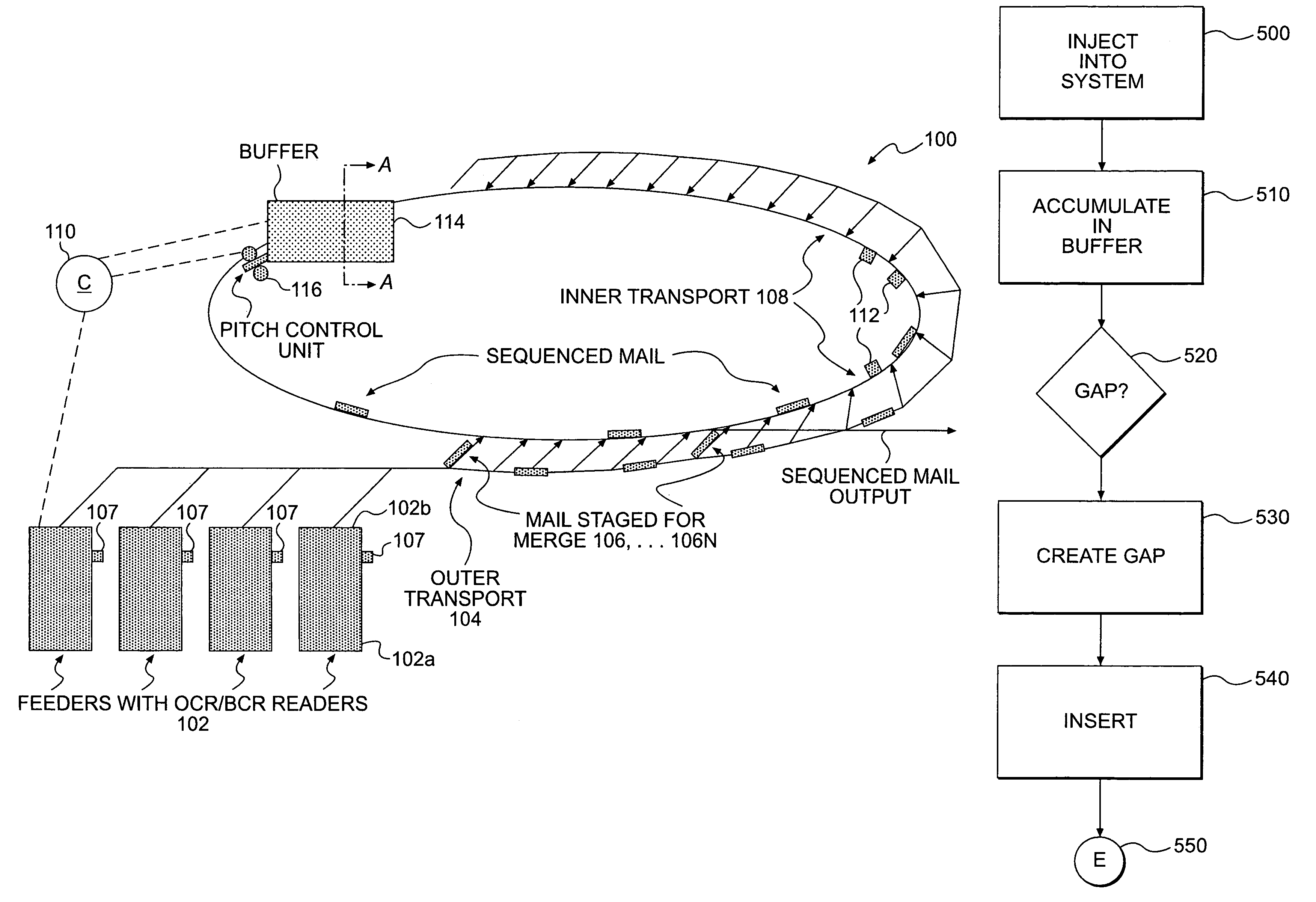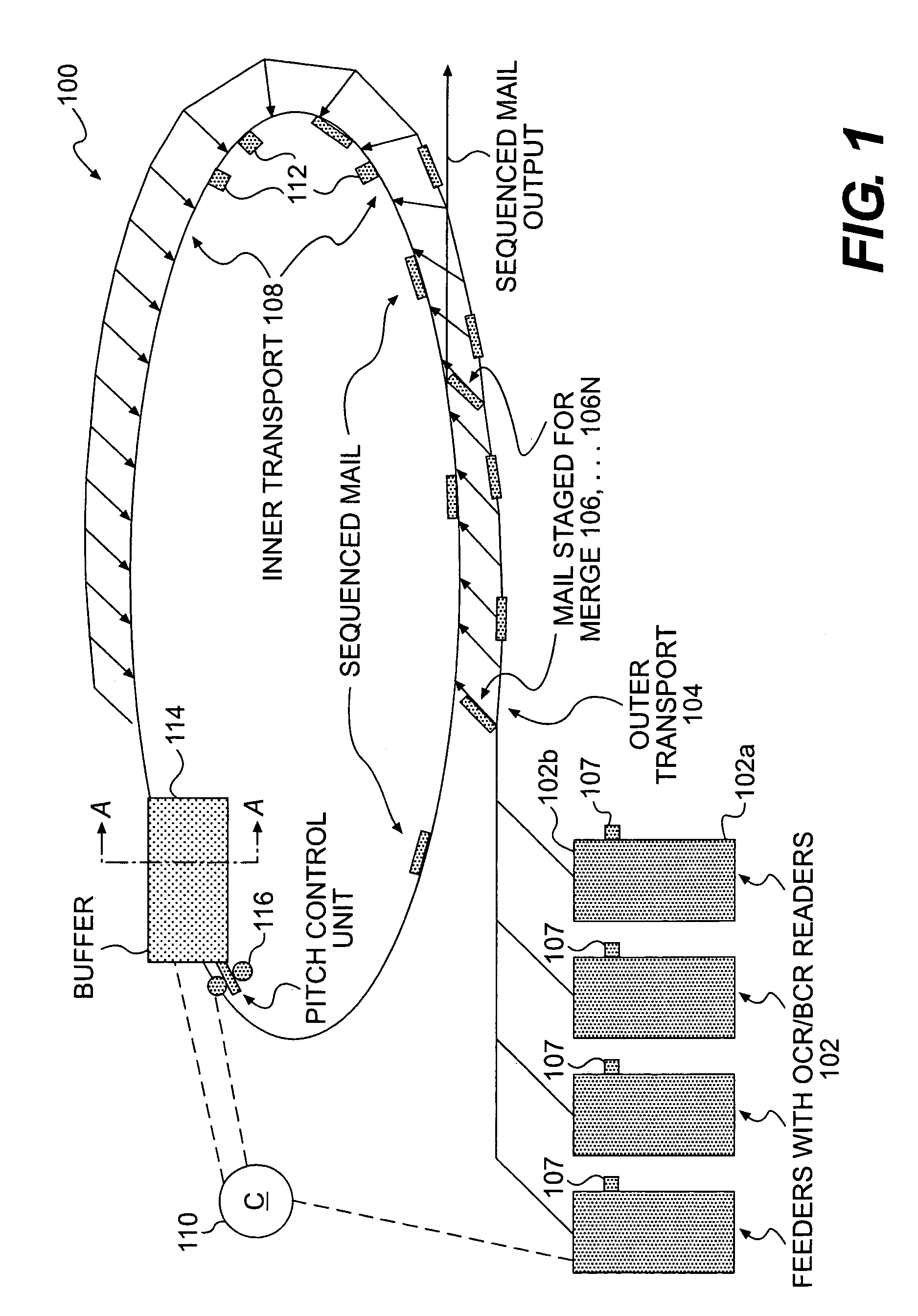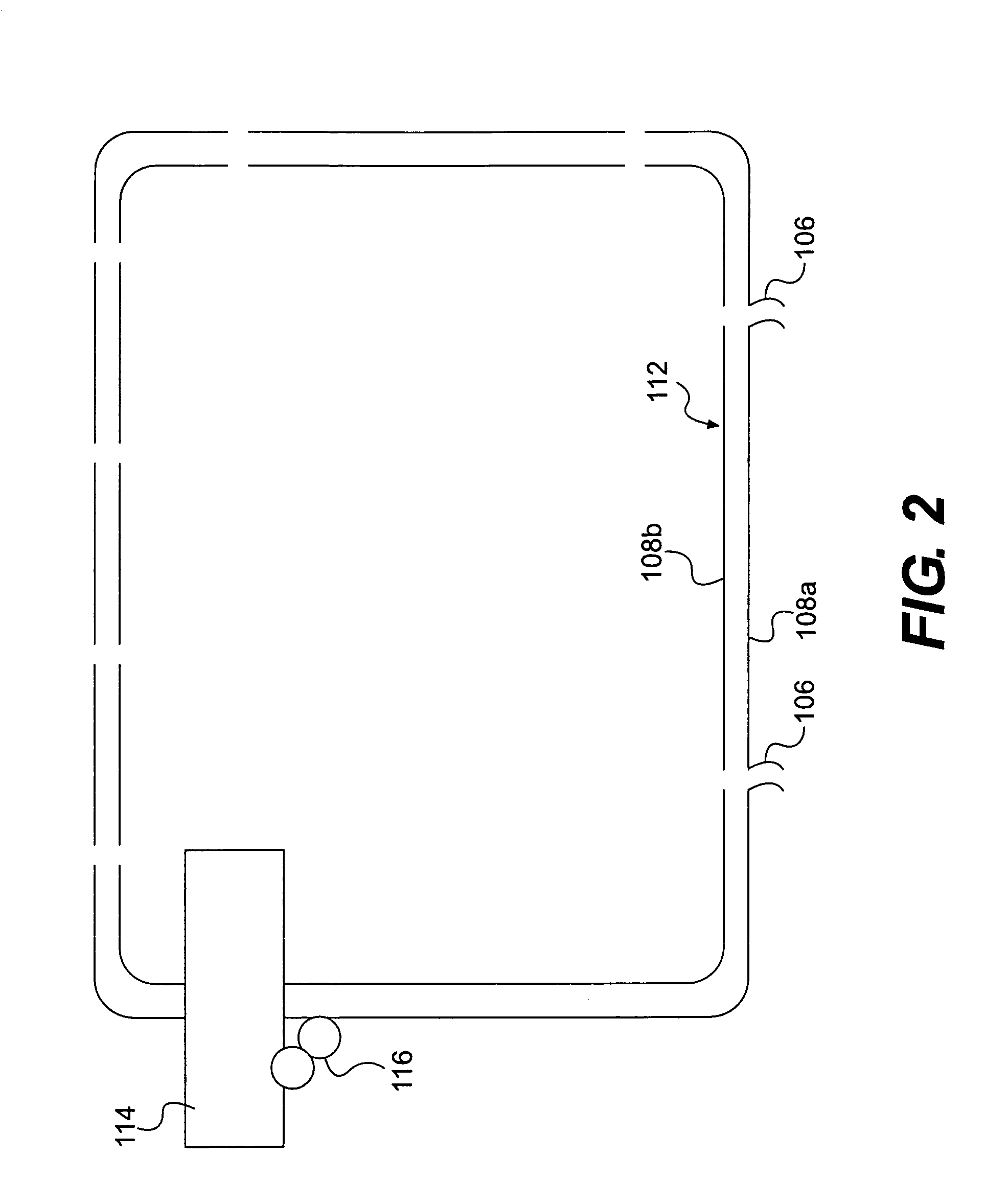Single pass sequencer and method of use
a single-pass sequencer and sequencer technology, applied in mechanical conveyors, sorting, instruments, etc., can solve the problems of increasing time-consuming, and difficult to use, and achieve the effect of improving the damage to the mail pieces, and improving the use of the technology
- Summary
- Abstract
- Description
- Claims
- Application Information
AI Technical Summary
Benefits of technology
Problems solved by technology
Method used
Image
Examples
Embodiment Construction
[0019]The invention provides a flexible system and method for sorting objects such as, for example, flats, mail pieces and other products or parts (generally referred to as mail pieces) using a single pass system. In the system and method of the invention, only a single feed or pass is required through a feeder system to order and sequence the mail pieces for future delivery. The system and method of the invention minimizes damage to mail pieces, as well as increases the overall efficiency of the sorting process. The invention is further designed to sort an array of combined types of mail pieces such as flats and letters, together. The invention may be utilized in any known processing facility ranging from, for example, a postal facility to a host of other illustrative facilities. The system and method of the invention may also be implemented in warehouse management systems.
[0020]In one implementation, the method and system of the invention is a one-pass sequencer that utilizes know...
PUM
 Login to View More
Login to View More Abstract
Description
Claims
Application Information
 Login to View More
Login to View More - R&D
- Intellectual Property
- Life Sciences
- Materials
- Tech Scout
- Unparalleled Data Quality
- Higher Quality Content
- 60% Fewer Hallucinations
Browse by: Latest US Patents, China's latest patents, Technical Efficacy Thesaurus, Application Domain, Technology Topic, Popular Technical Reports.
© 2025 PatSnap. All rights reserved.Legal|Privacy policy|Modern Slavery Act Transparency Statement|Sitemap|About US| Contact US: help@patsnap.com



